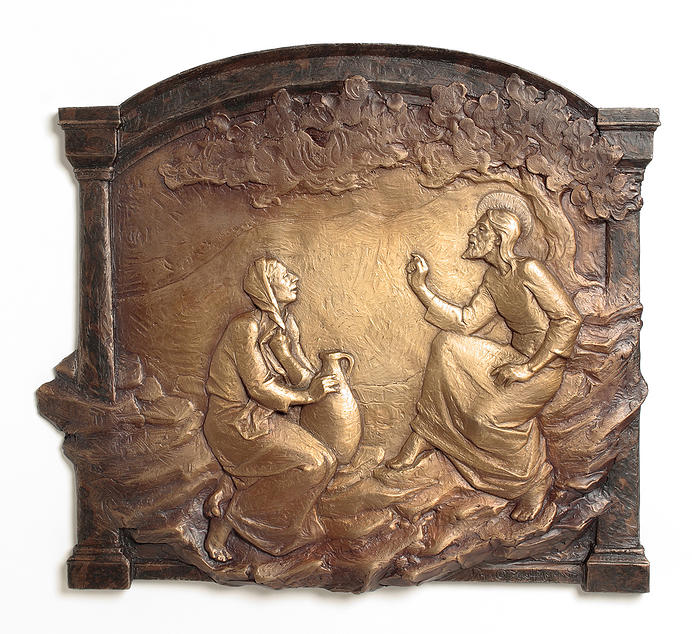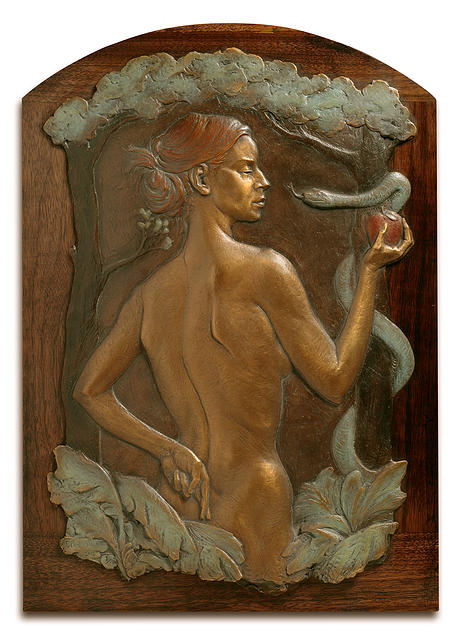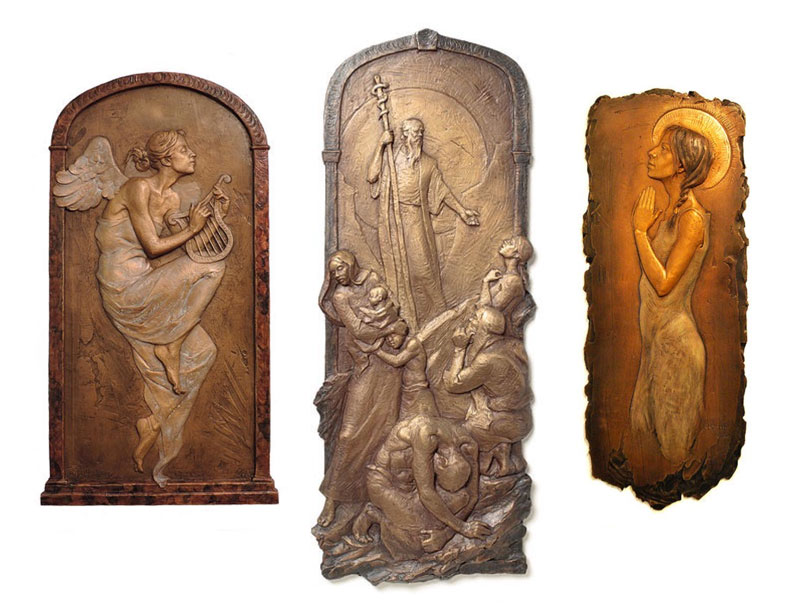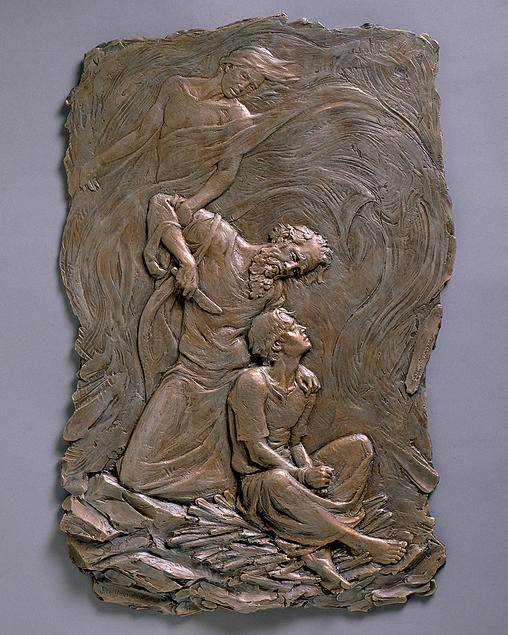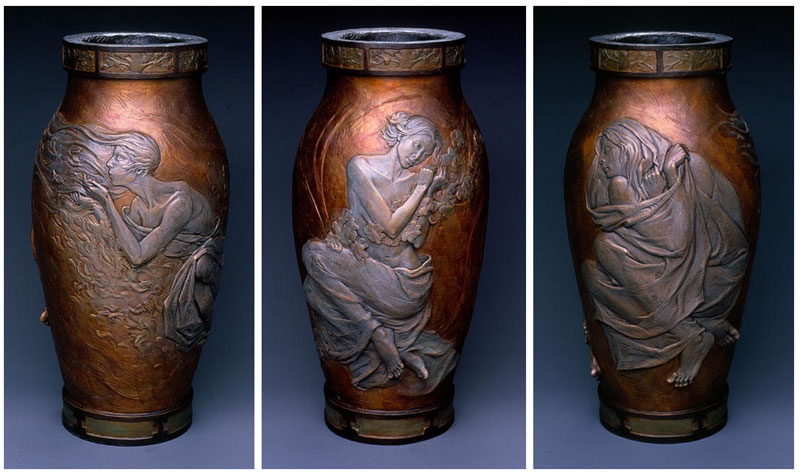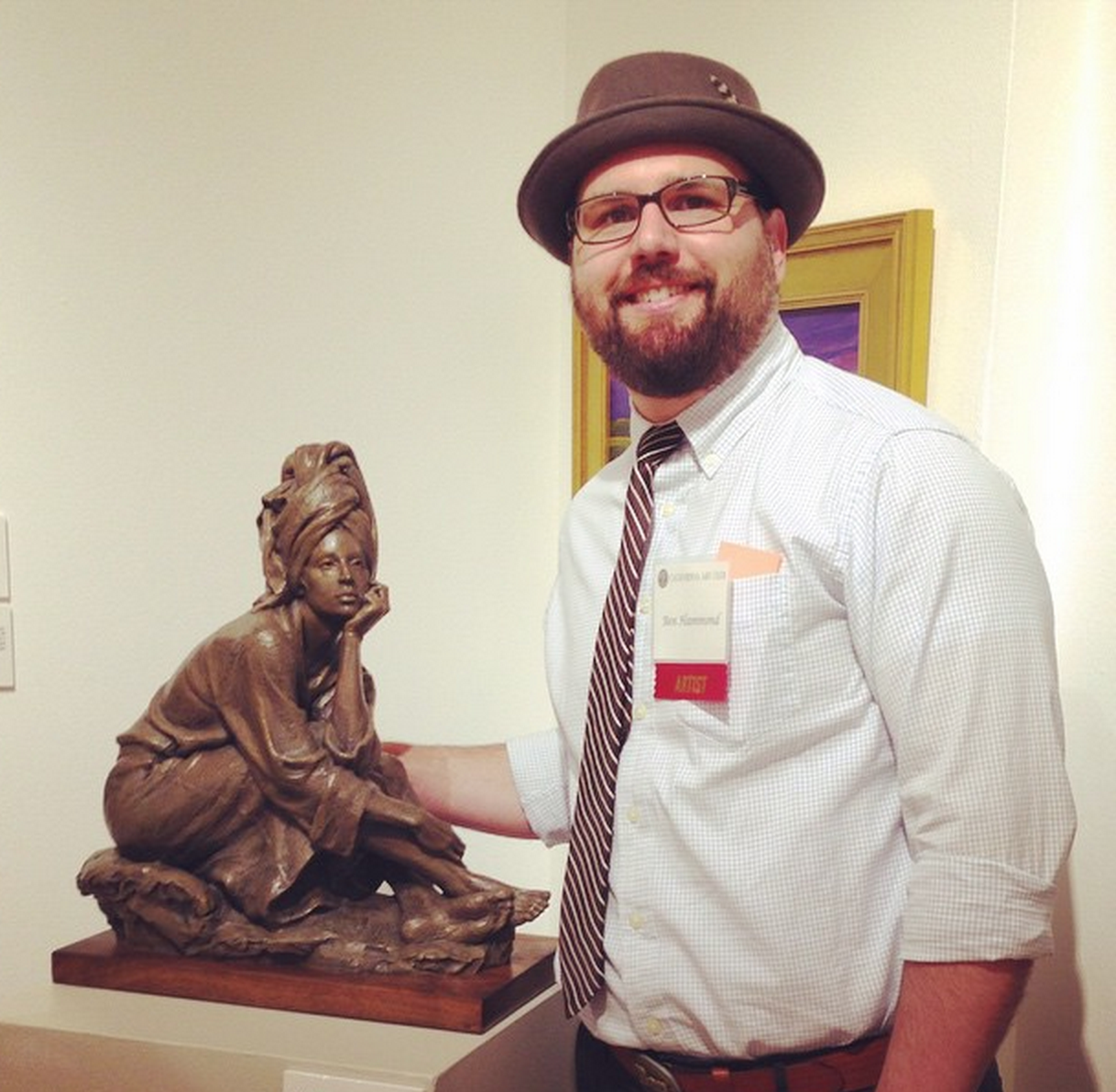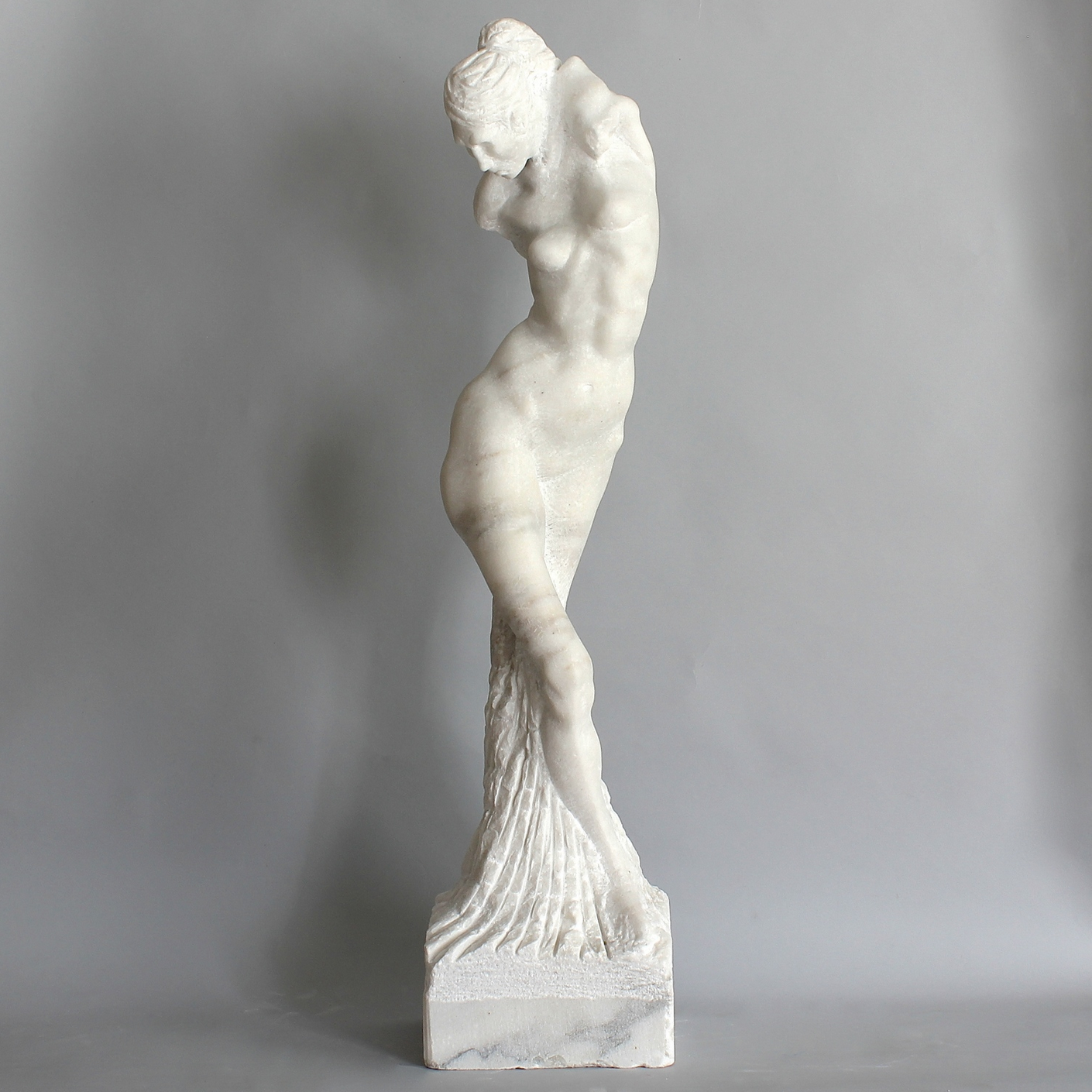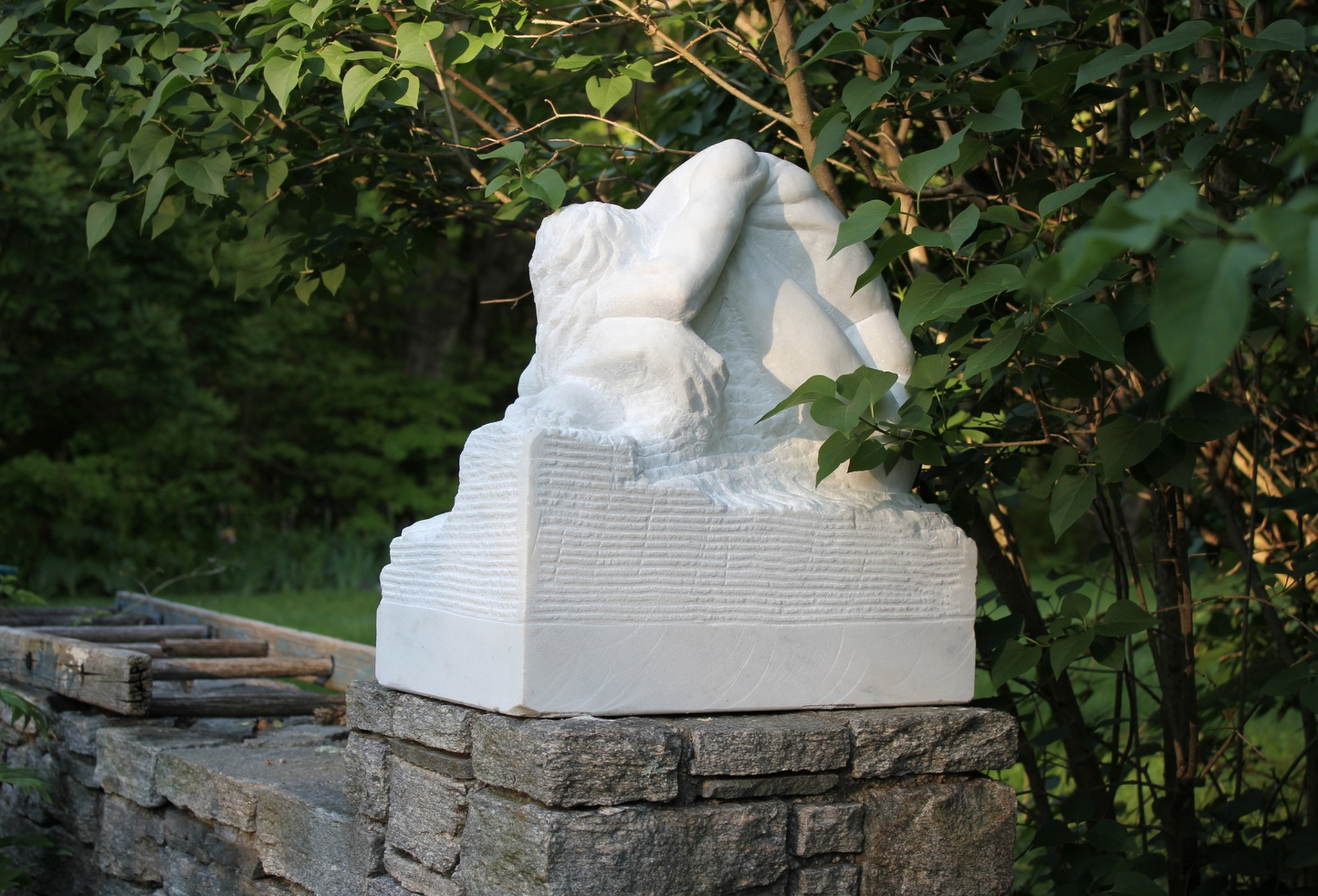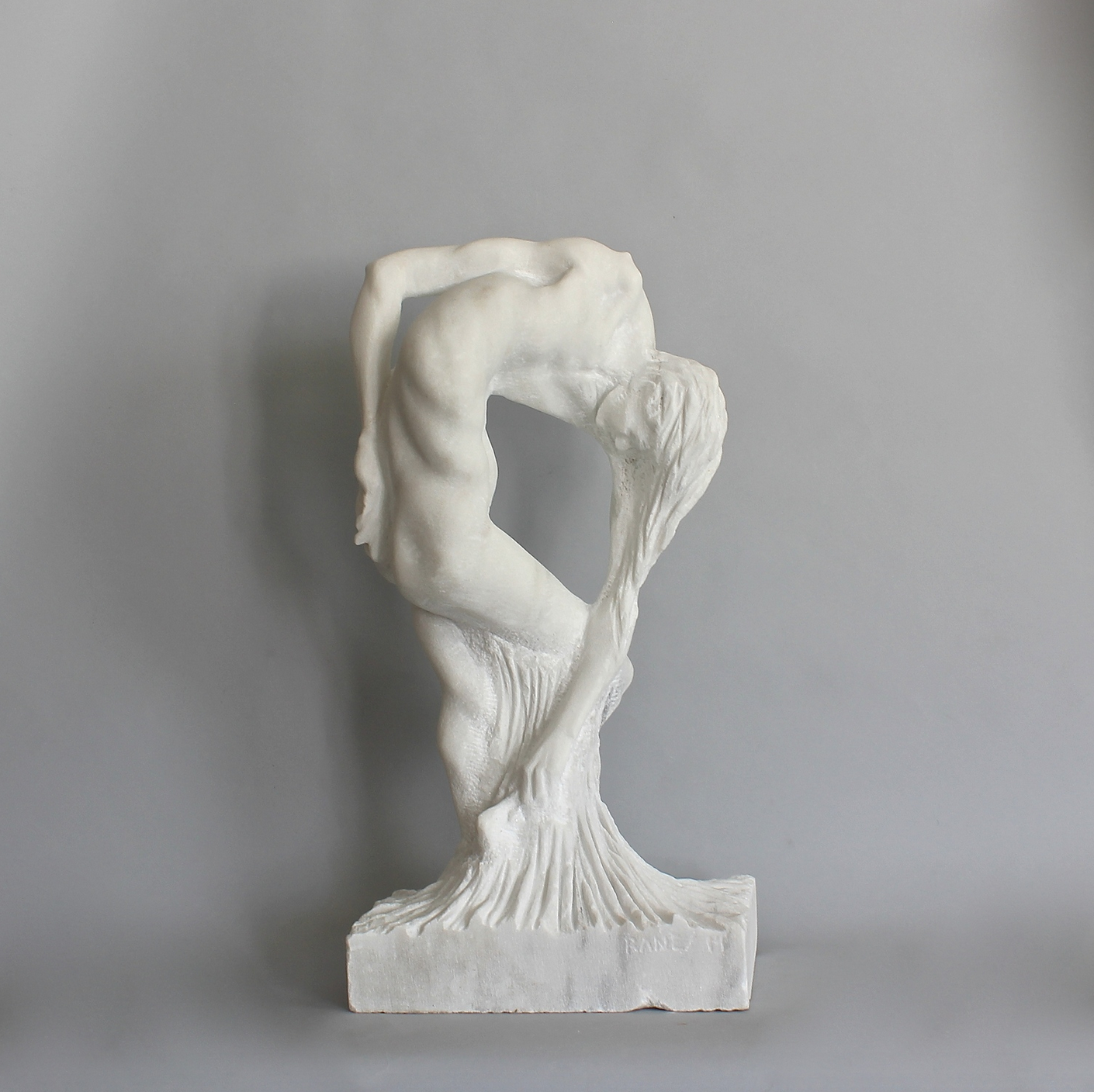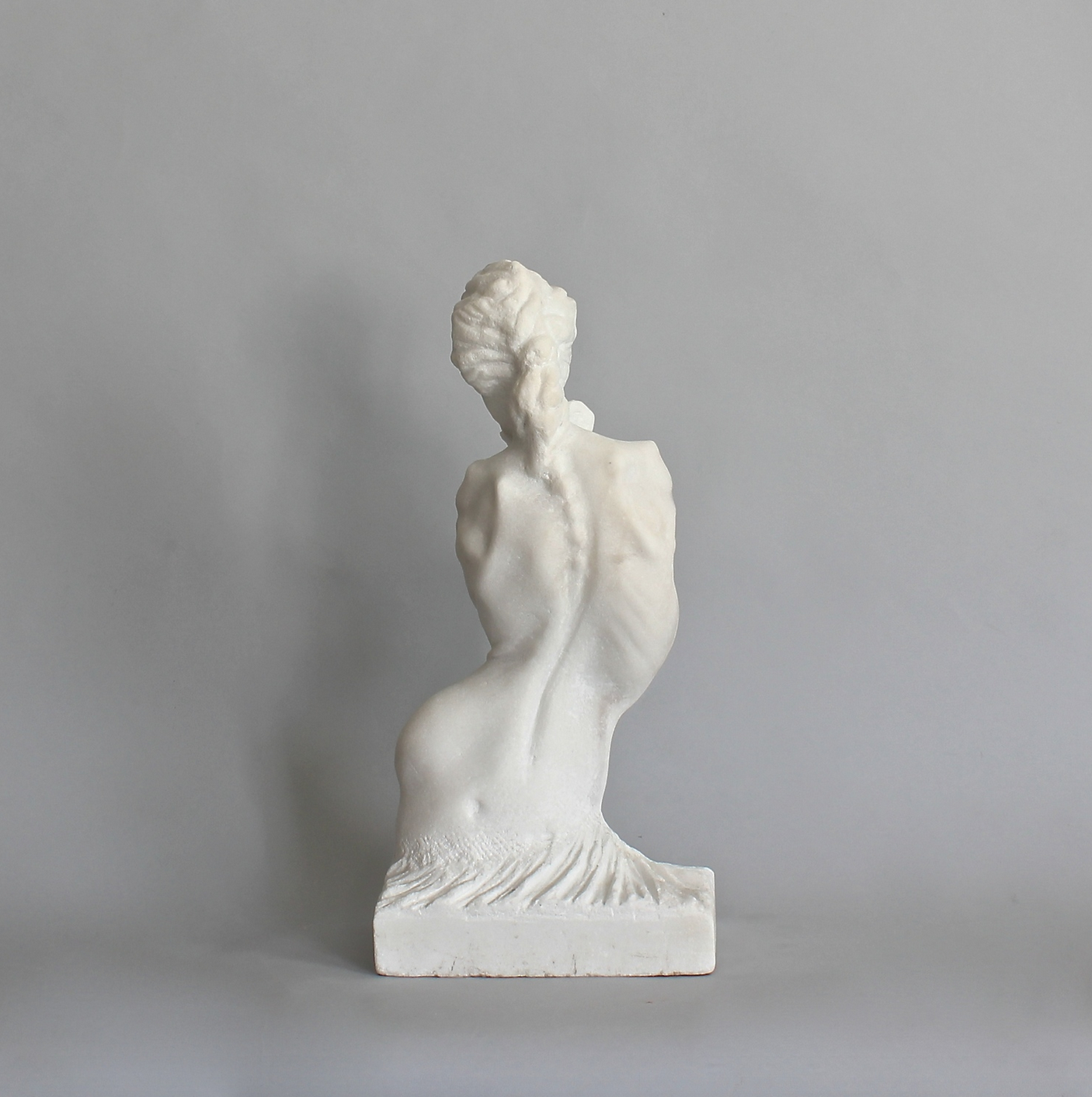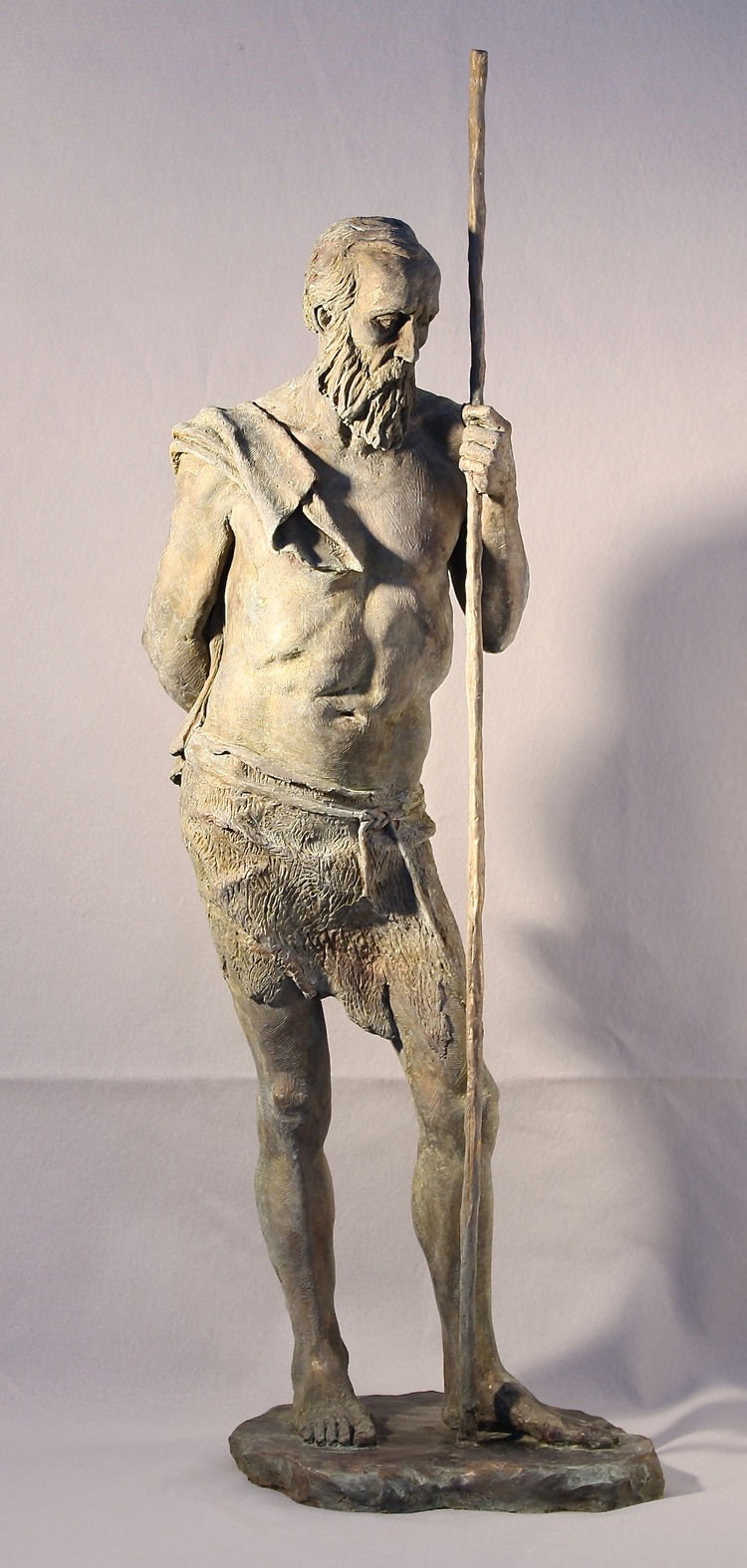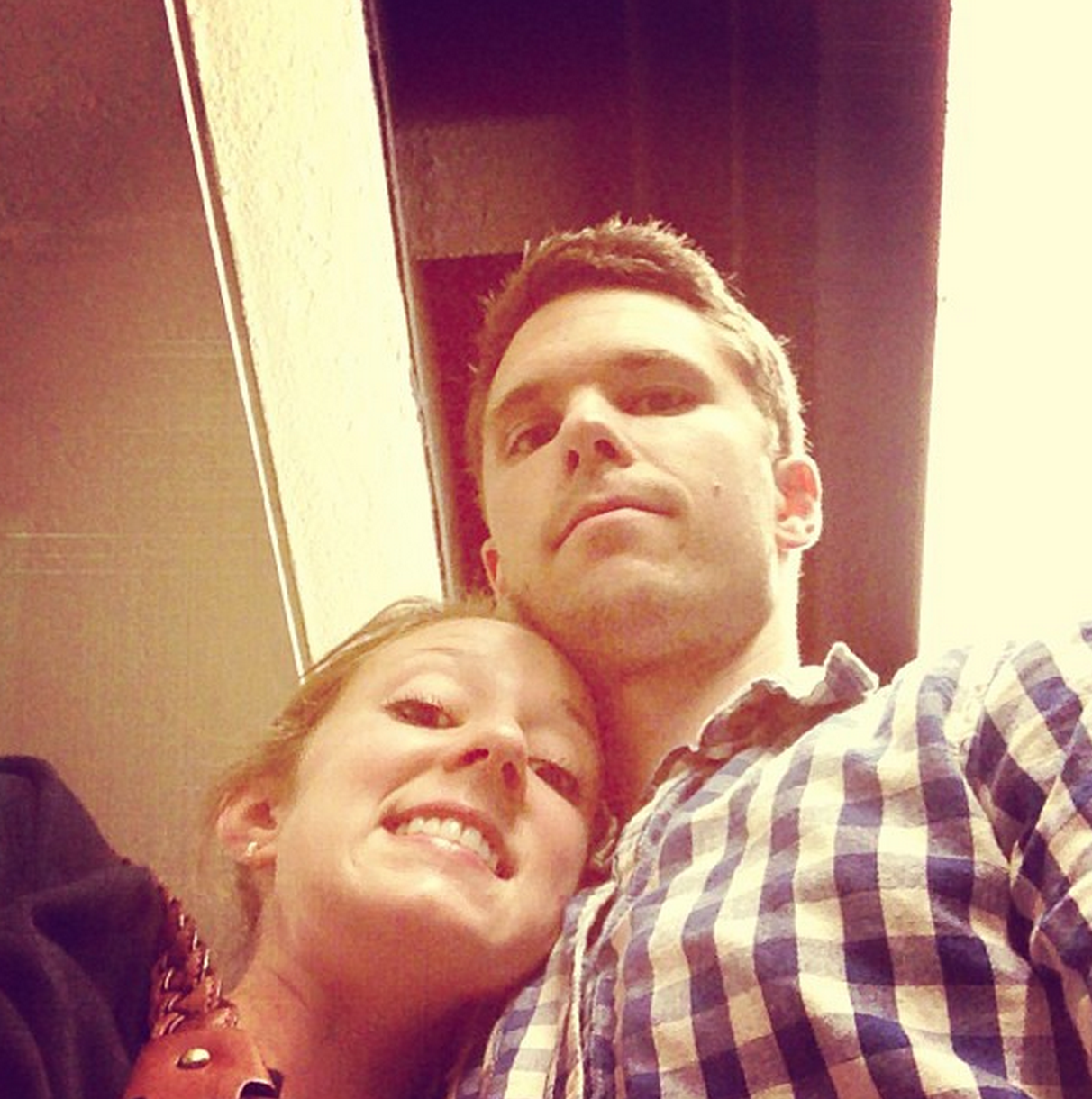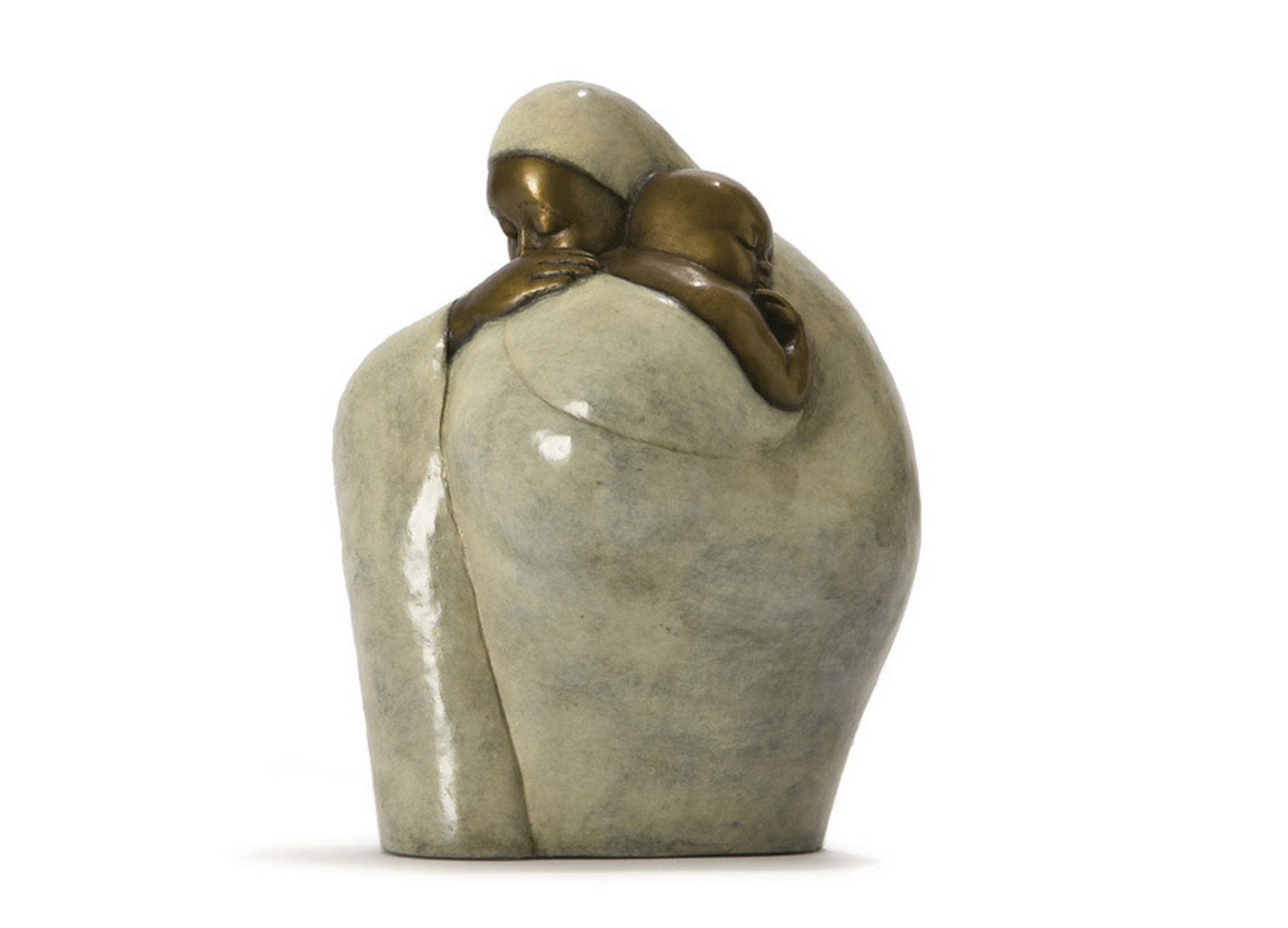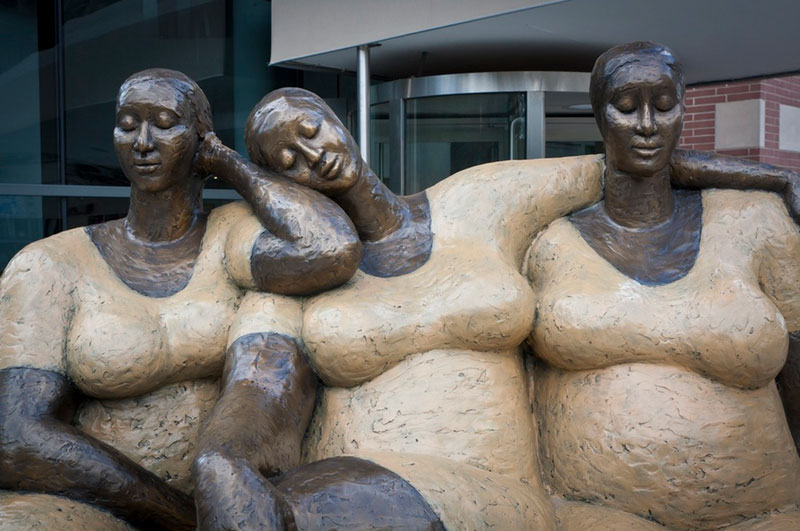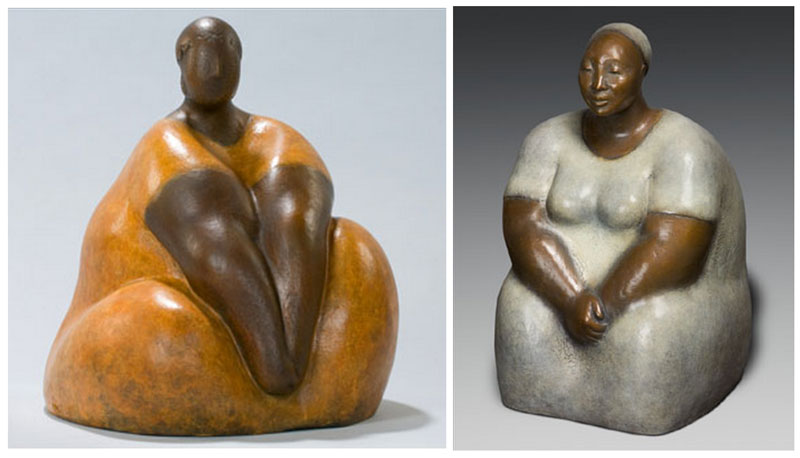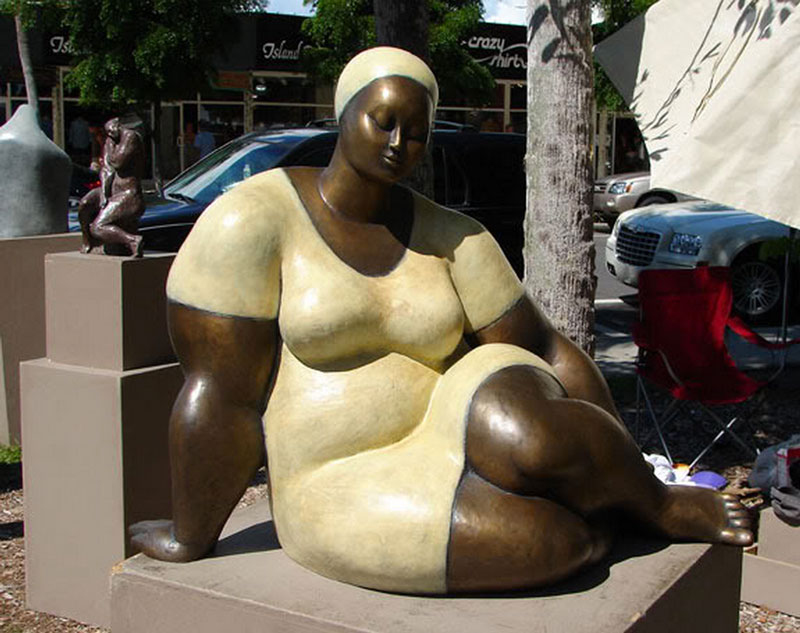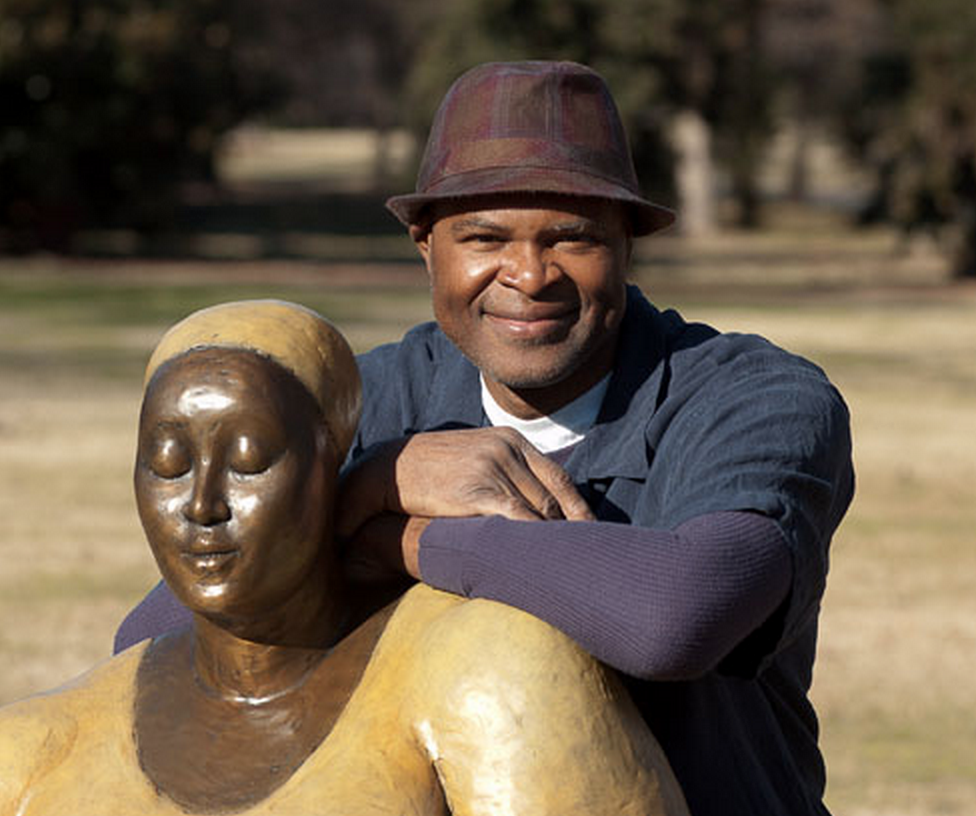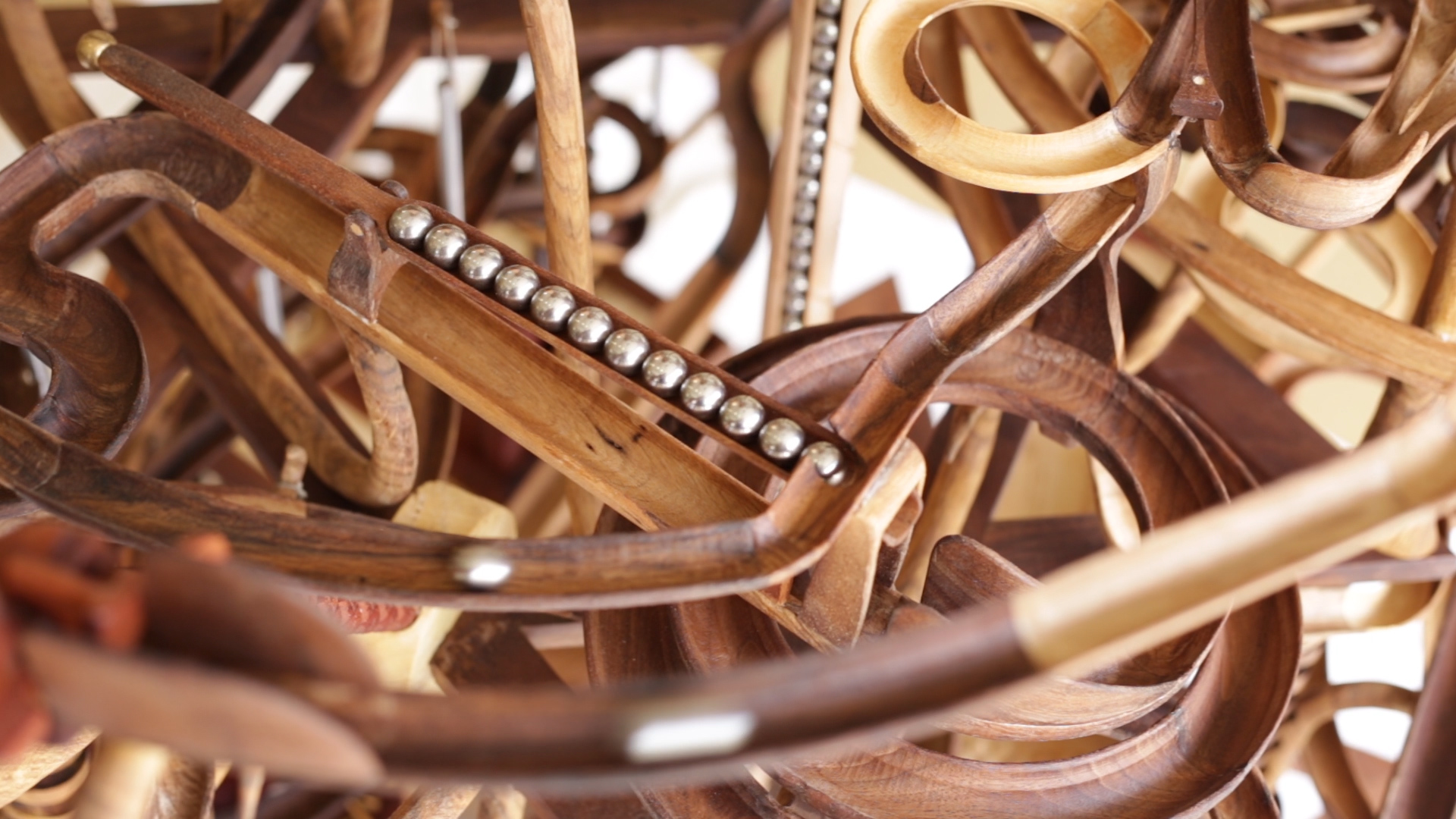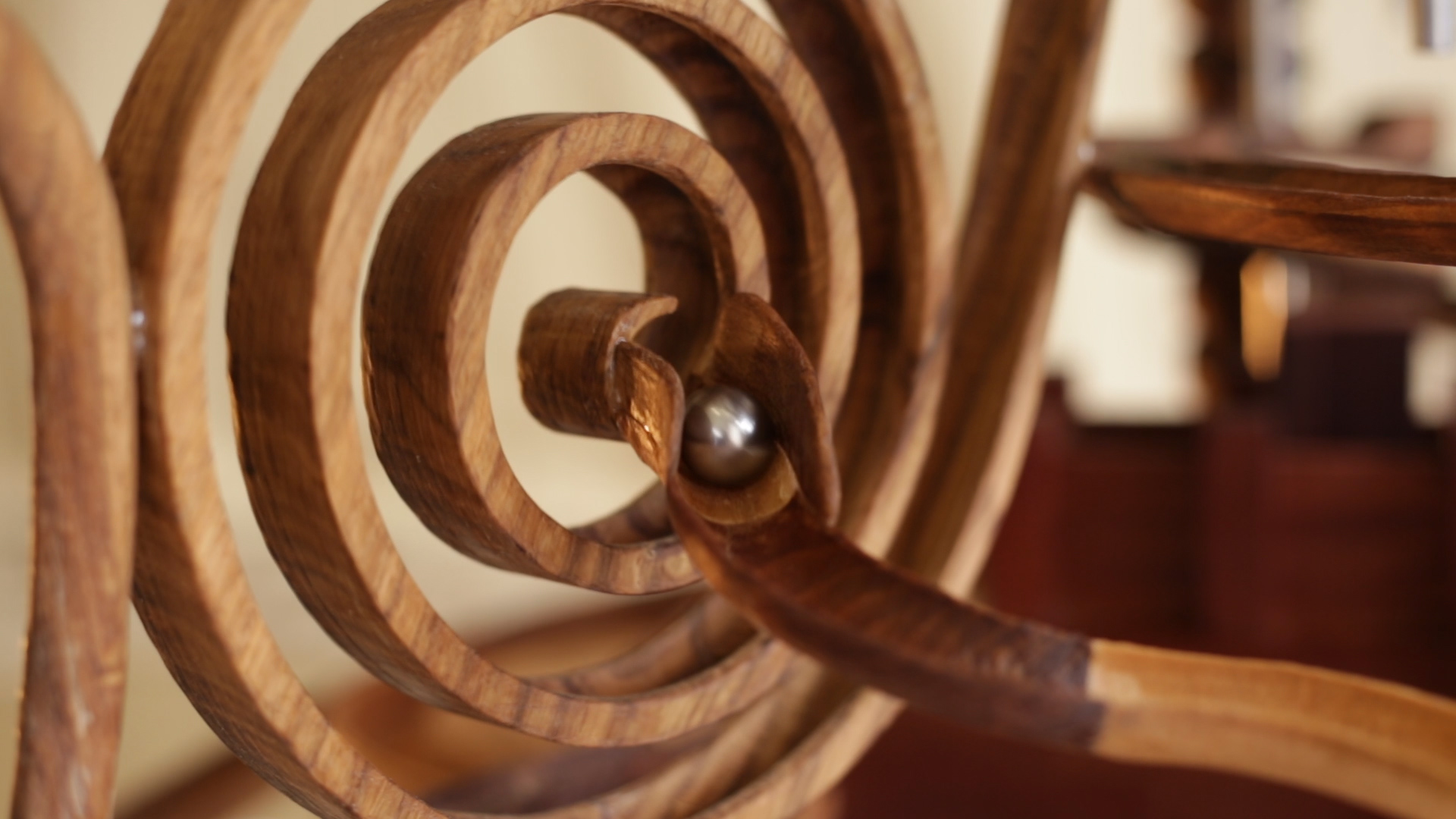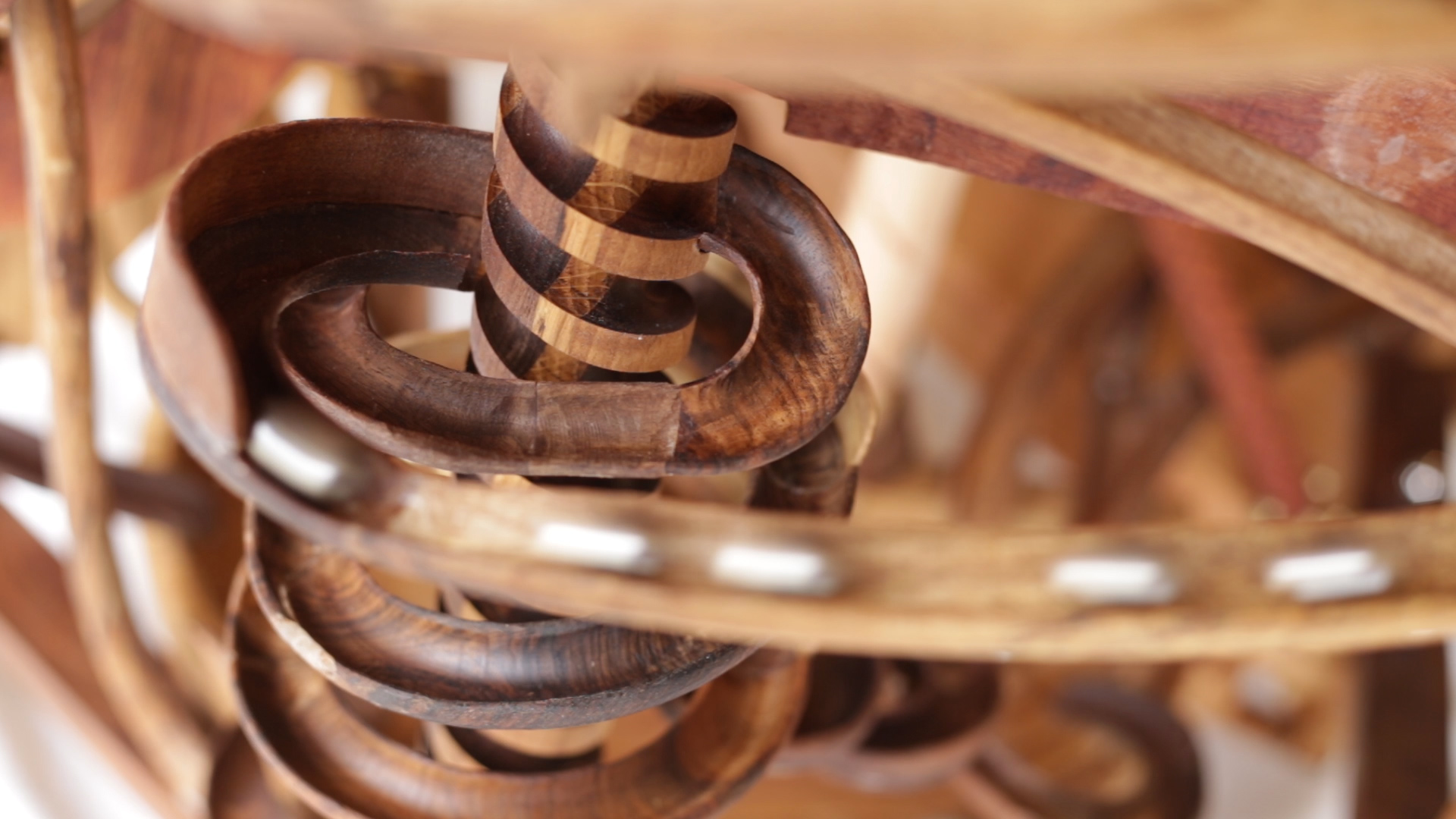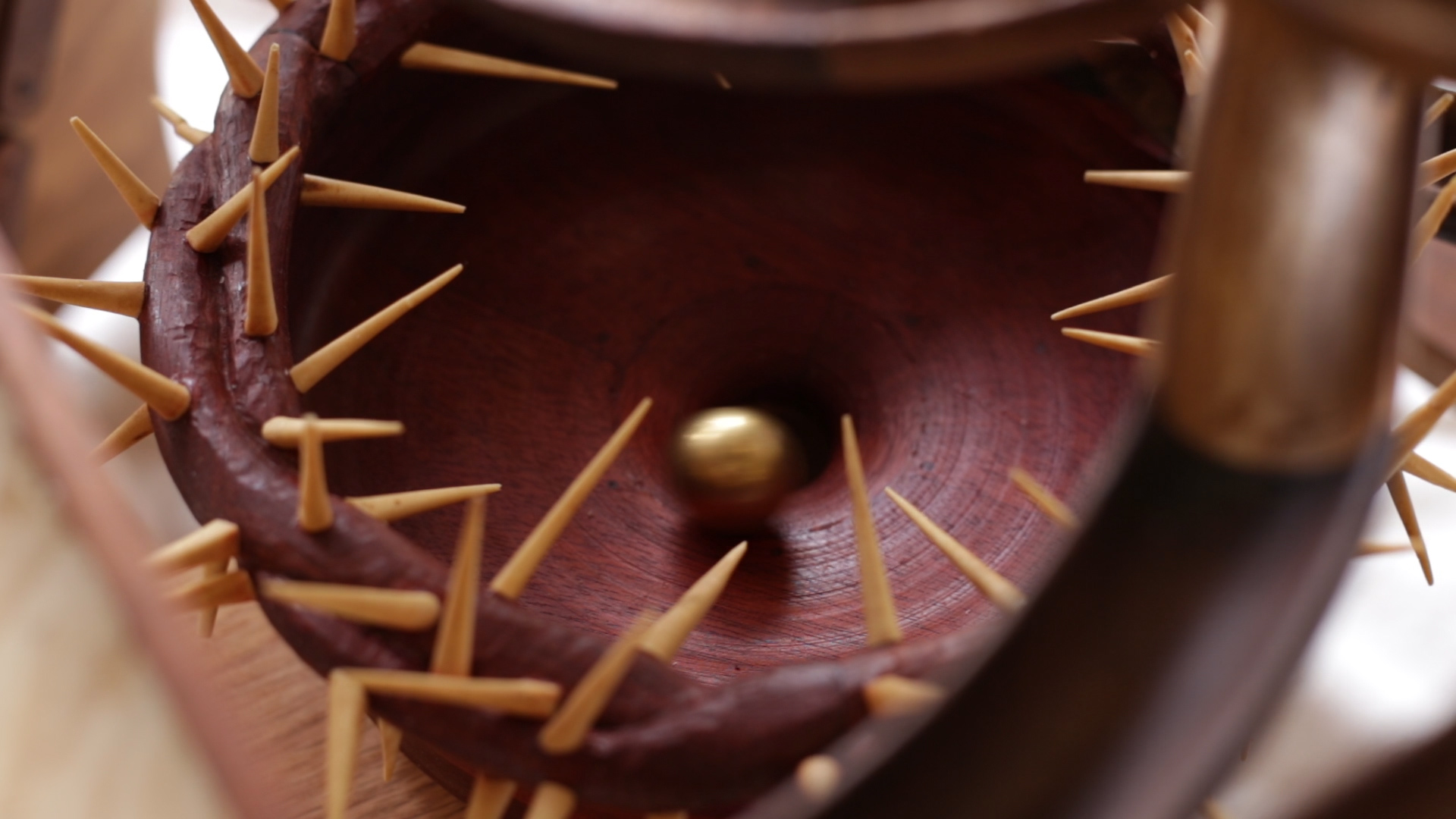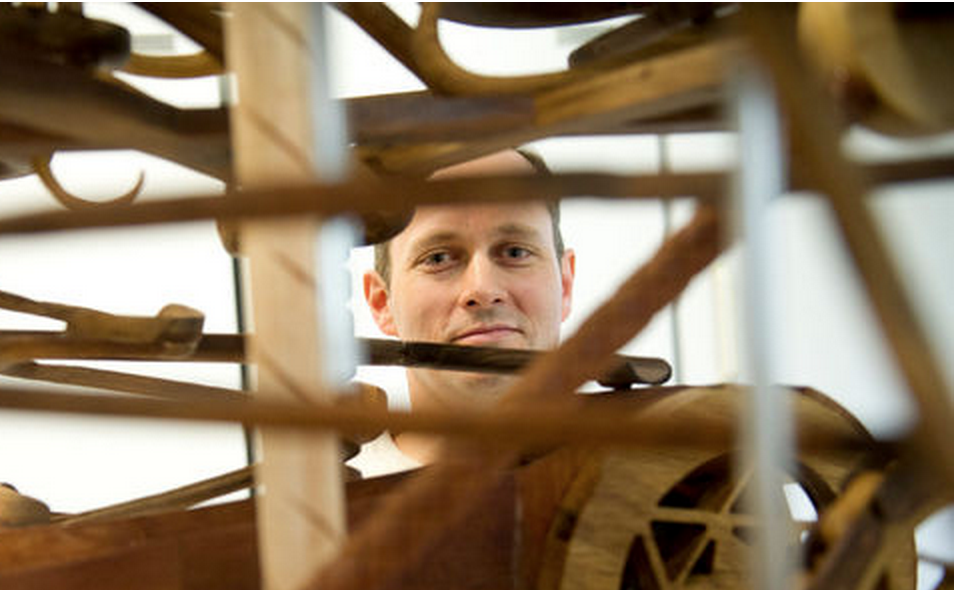Ben Hammond is a sculptor from the tiny rural town of Pingree, Idaho. He discovered sculpture in college and apprenticed with famed sculptor Blair Buswell for many years. He now creates commissions and gallery pieces from his studio in Utah. He and his wife are expecting their fourth child. Regarding his art, Hammond explains, “Some of my deepest feelings have a hard time being articulated through words, so I create art. I hope that the viewer can sense what is most important to me when they see my work. I don’t try to hide any secret meaning in my art. Each piece is deeply personal, yet universal.”
You work in different mediums. What do you like about bas-relief? I took a trip to New England in 2005 to visit the studios of some of the great early American sculptors like Augustus St. Gaudens and Daniel Chester French. I was overwhelmed by their ability to sculpt the figure, create portraiture, and execute bas-relief [or low relief]. I figured that if I ever wanted to be a great sculptor, I needed to become proficient at all three as well. I soon found that bas-relief is one of the more tricky mediums in the sculpture field. I took several workshops with other artists including Eugene Daub and Stanley Bleifeld in order to try and master relief sculpture. I’ve been doing it since 2006 and feel that I’m starting to get pretty good at it…that is until I see a masterpiece done by another artist of days past and realize I still have a ways to go.
You do a lot of religious imagery. Is that spiritually or commercially driven–or both? It’s definitely not commercially driven. Most really religious people are generally frugal, which is fine. I am too. (Except when it comes to art.) Sometimes I capture something that even frugal art-loving people can’t live without. I do have a few wealthy religious art-loving collectors, and they help keep my family fed as well, but most of my religious pieces are something I have to create at the time. It’s on my mind and in my heart and I can’t move forward until I do it.
The Church has had a number of famous sculptors over the years, but do you feel sculpture is underrepresented within the Church? I can think of the series in Nauvoo, on Temple Square, and at BYU–but not much else. YES!!!!!!!!!!!!!! I think that sculpture still has a very ‘Engraven Image’ stigma tied to it in the church. It definitely doesn’t find itself in temples, churches, or church publications very often and therefore ever feel approved for consumption by church members. The Laie, Hawaii and the Oakland temples both have beautiful relief sculpture facades and I can’t figure out why they don’t do that more often. Sculpture really lends itself to architecture, like you see in all the beautiful churches in Europe, but maybe they want to avoid that appearance. I don’t know. Maybe they worry people will worship idols if there is more great sculpture around.
